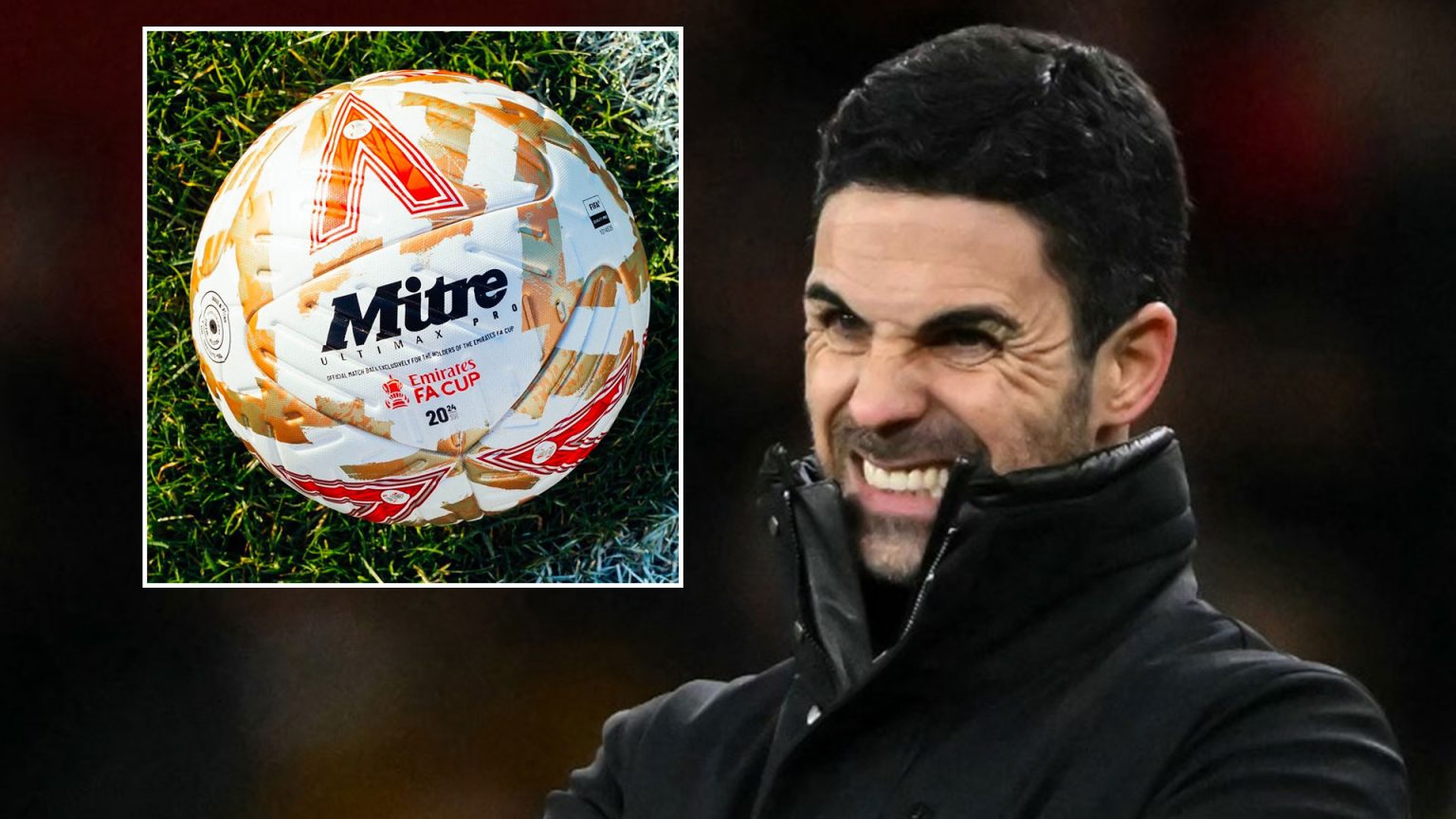The upcoming FA Cup third-round clash between Arsenal and Manchester United will feature a unique match ball, distinct from the ones used in other third-round ties. This special edition ball, the Mitre FA Cup Ultimax Pro Winners ball, is a tribute to Manchester United, the current FA Cup holders. This decision by Mitre, the competition’s ball supplier, to introduce a unique ball for this specific match has the potential to stir controversy, especially given Arsenal manager Mikel Arteta’s recent comments regarding the ball used in their Carabao Cup semi-final defeat to Newcastle. Arteta expressed concerns about the ball’s flight characteristics, suggesting it contributed to his team’s inability to score. He highlighted the difference in flight and grip compared to the Premier League ball, emphasizing the need for adaptation. This situation sets the stage for potential further debate should the special edition ball used in the Arsenal-United match become a factor in the game’s outcome.
Arteta’s prior complaints about the ball used in the Carabao Cup semi-final against Newcastle add another layer of complexity to the situation. He specifically pointed out the ball’s tendency to “fly a lot,” making it difficult for his players to control their shots. This, combined with the differing grip compared to the Premier League ball, presented a challenge for his team. The EFL responded to Arteta’s criticisms by emphasizing the ball’s adherence to FIFA Quality Pro standards, its successful use in other major European leagues, and the lack of similar complaints from other clubs. However, the introduction of a different ball yet again for the FA Cup tie against Manchester United may reignite the discussion around ball specifications and their impact on gameplay.
The use of a commemorative ball for the Arsenal-Manchester United match, while seemingly a gesture of respect to the defending champions, introduces a variable that could influence the match’s dynamics. Players from both teams will need to adjust to the new ball’s characteristics, potentially impacting passing accuracy, shot power, and overall ball control. This adjustment period could be particularly crucial in a high-stakes match like an FA Cup tie. Arteta’s previous sensitivity to ball variations raises the likelihood of him scrutinizing the special edition ball’s performance closely. Any perceived disadvantage stemming from the ball’s characteristics could become a point of contention.
The EFL’s defense of the Carabao Cup ball, highlighting its FIFA certification and widespread usage, underscores the regulatory bodies’ adherence to standardized ball quality. However, the decision to use a different ball for the Arsenal-United FA Cup match creates an inconsistency that could be perceived as unfair. While the commemorative nature of the ball is understandable, it inadvertently introduces a potential advantage or disadvantage for one of the teams. This could lead to accusations of favoritism or, conversely, claims of unnecessary difficulty imposed on one side. The situation highlights the delicate balance between celebrating tradition and ensuring a level playing field.
The historical context of Arsenal and Manchester United’s rivalry adds further weight to the ball controversy. Matches between these two giants of English football are always highly anticipated and fiercely contested. Any external factor, such as a unique match ball, has the potential to magnify existing tensions and become a focal point of post-match analysis. Should the game be decided by a narrow margin or involve controversial moments related to ball control, the choice of ball is likely to be heavily scrutinized. The narrative surrounding the match could shift from the players’ performances to the influence of the ball itself, potentially overshadowing the on-field action.
The situation surrounding the FA Cup match ball exemplifies the broader debate about standardization and variation in sporting equipment. While standardization ensures a level playing field and allows for fair comparison of performance, variations can add an element of unpredictability and excitement. The commemorative ball in this case represents a compromise between these two principles, but it also highlights the potential for controversy. The outcome of the Arsenal-Manchester United match, and any related discussion about the ball’s impact, will contribute to the ongoing conversation about the role of equipment in shaping sporting competition.




